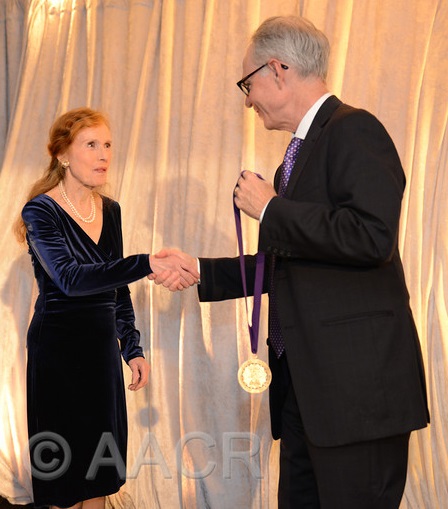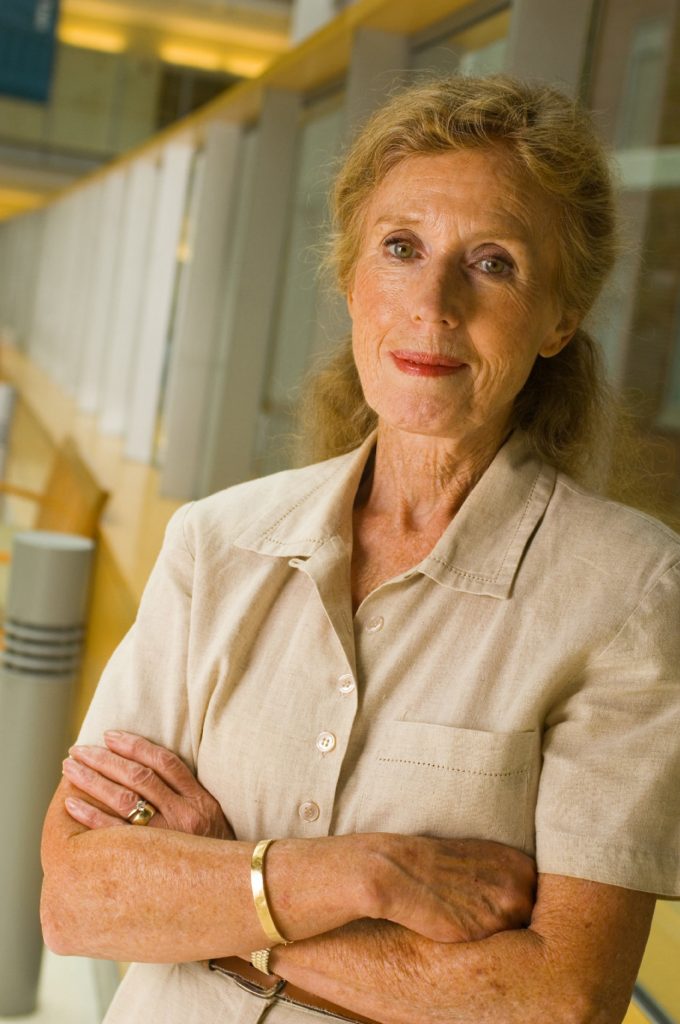
Angela M.H. Brodie, PhD, FAACR, was a role model for all scientists in the world of endocrinology, but especially female scientists because she blazed many trails and maintained rigorously high standards for herself, her students, and her colleagues. One of those colleagues, V. Craig Jordan, OBE, PhD, DSc, FMedSci, FAACR, at the University of Texas MD Anderson Cancer Center in Houston, shares Brodie’s remarkable life and passion for science with Endocrine News readers.
Angela M.H. Brodie died on the June 7, 2017 in Fulton, Maryland aged 82. She died of complications from Parkinson’s disease and pancreatic cancer. She was at home in the same bed as her father Herbert Hartley who died before her. They both had the same panoramic view of a beautiful line of tall trees at the end of her garden. Her husband, Harry Brodie, the chemist of their professional team was beside her as he was throughout their 53 years of marriage. Theirs was a partnership in life and the laboratory.
Angela and Harry Brodie are “The Parents of Specific Aromatase Inhibitors.” Estrogen is made by the aromatization of androgens, so Angela reasoned that if estrogen drives the development and growth of breast cancer then preventing estrogen action by specifically blocking its synthesis in postmenopausal women would be a targeted strategy. Indeed, at that time, the non-steroidal antiestrogen, tamoxifen, was then being considered as a targeted therapy to treat breast cancer by blocking the binding of estrogen to the estrogen receptor (ER). However, tamoxifen was a medicine with some inherent estrogen-like activity: it was not a pure antiestrogen. Angela reasoned, “there is no antiestrogen like no estrogen at all.”
The story of how the first specific aromatase inhibitor, 4-hydroxyandrostenedione, (formestane) travelled from the bench to the bedside is exceptional given the obstacles Angela Brodie had to overcome. For this reason it is necessary to travel back in time so that the story can be placed into context.
Origins
Angela was born in Oldham, Manchester in the UK in 1934. She attended Ackworth Quaker Boarding school where she learned to see the good in others and consider others before herself. Angela was five years old when WWII broke out and she saw firsthand the horrors of nightly bombing and how war destroyed families. As a result, she had a lifetime abhorrence of war and violence.
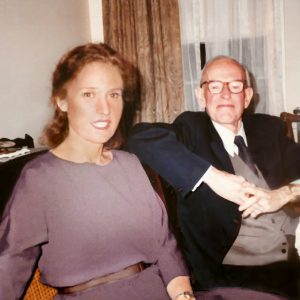
It was her father, Herbert Hartley, an industrial chemist, who encouraged her to pursue a career in science. However, in the 1950s this was not a traditional career opportunity for women. Nevertheless, Angela excelled completing her BSc(hons) degree in biochemistry (1956), followed by an MSc (1959) both at the University of Sheffield. She was awarded a prestigious Medical Research Council scholarship by national competition to obtain her PhD (1961) in chemical pathology at the University of Manchester’s Christie hospital. Here she would witness the then-standard of care for the treatment of breast cancer. Radical mastectomy demolished a woman’s identity. At this time, she vowed to create a better treatment for breast cancer so that, as she put it, “women could avoid being sent to the butcher’s shop.” To Angela, it was simple-women deserved better.
In the 1960s, it was traditional for scientists in the UK, to go to the U.S. for postdoctoral training. These postdoctoral Fellows were self-selecting as potential high flyers. On returning to the UK, they would be a special group having earned their BTA or “Been To America” qualification.
Angela chose to compete for a place in the prestigious steroid training program at the Worcester Foundation for Experimental Biology (WFEB) Clark University in Worcester. She was successful and she started her formal education in steroid endocrinology.
The Worcester Foundation for Experimental Biology
The WFEB was the home of the oral contraceptive. The translational work by Drs. Gregory Pincus, Min Chueh Chang, and John Rock changed society forever. For the first time, women had control over their bodies and reproduction. The encyclopedic story of Pincus as the Founding Director of the WFEB in 1944 has been told by Professor Leon Speroff. This work is a fascinating read of how unlikely partners would change the world of women’s health. In addition to his work on contraception, Chang pioneered in vitro fertilization in animals. Chang’s work was incredibly extensive going so far as to create new species from related animals that would not normally mate. Chang’s breakthrough success in the laboratory created the scientific basis for the birth of Louise Brown in July 1977 in Great Britain.
However, Angela did not return to the UK after completing her training in steroid endocrinology. Instead, she was recruited to join the world famous British “Tait Team,” which, having discovered aldosterone, decided to leave Great Britain and work in the rich environment of steroid endocrinology at the WFEB. It is interesting to note that James and Sylvia Tait were only the second husband and wife team to be elected as Fellows of the Royal Society in the UK. The first to obtain that distinction was Queen Victoria and her consort Prince Albert.
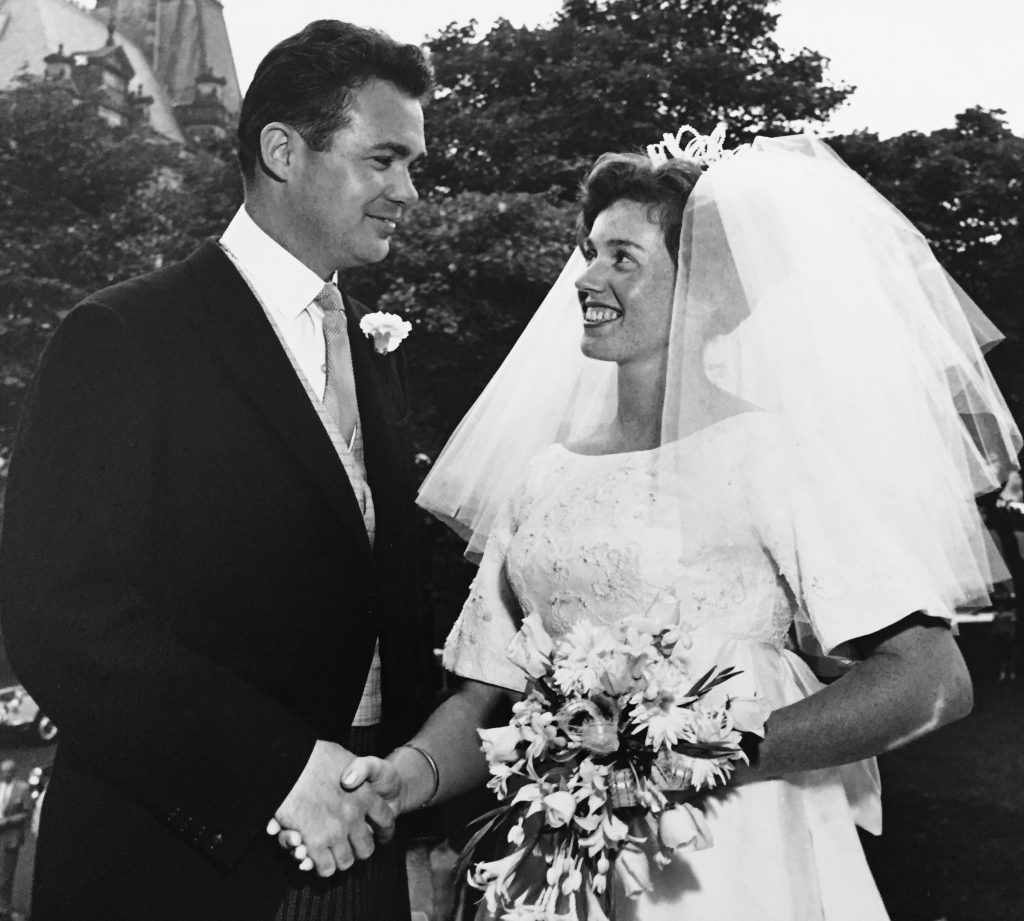
Angela completed several refereed publications with the “Tait Team” but it was at this time that she met and subsequently married Harry Brodie on the 15th August 1964 (left). Harry was a chemist at the WFEB with independent research funding to study the aromatase enzyme system that converts androgens to estrogens. They quickly started a family but when Angela returned to work with Harry, the world of government-sponsored research had changed. President Nixon had signed the National Cancer Act in 1971. The goal was to create regional cancer centers that would accelerate the availability of new cancer medicines to treat patients. Here was Angela and Harry’s chance to create aromatase-specific medicines to treat breast cancer in postmenopausal women. Harry would be the synthetic organic chemist and Angela the pharmacologist. It was Harry who wanted Angela to lead her own laboratory, but to do this a scientist has to have a run of first-authored refereed publications on the relevant topic. This required a long-term plan of action, collaborations, and learning new animal models to achieve success in developing a path to clinical testing of a new synthetic medicine. However, the play of chance is a critical component in medical progress.
I (VCJ) arrived at the WFEB from the University of Leeds in September 1972. I found that the person with whom I was supposed to work for two years as a Visiting Scientist, had accepted a position at the World Health Organization in Geneva as the head of their Contraception Program. I decided to find a new project as well as the project on prostaglandins that was paying my salary. Fortunately, the 1971 National Cancer Act was now providing opportunities to develop drugs to treat cancer. All I knew about was nonsteroidal antiestrogen that were now of no interest for drug development as they were “failed morning after pills.” Most importantly, the external examiner of my PhD at the University of Leeds was Dr. Arthur L. Walpole, the Head of the Fertility Control Program at ICI Pharmaceuticals Division (now AstraZeneca). A phone call to him about developing their failed “morning after pill,” code-named ICI 46,474, as an anti-estrogenic treatment for breast cancer met with success. This led to ICI Pharmaceuticals Division supporting my laboratory at the WFEB (1973-74) and the University of Leeds (1974-79). I wanted to design a new strategy to treat breast cancer but, like the situation with Angela and Harry, this was a long shot. All hopes were pinned on the cure of all cancers by using combination cytotoxic chemotherapy.
By chance, critical pieces of the mosaic of the future of breast cancer therapy fell into place at the WFEB. Walpole explained that he now planned not to take early retirement and ICI Pharmaceuticals Division would market their non-steroidal antiestrogen ICI 46,474 under the generic name of tamoxifen (Nolvadex®) as a treatment for metastatic breast cancer (MBC). The company was already aware that their anti-estrogen was equally effective as other endocrine therapies to treat MBC. They had reviewed all data and all but abandoned development in 1972 because of a projected lack of financial return. The coincidence of me knowing Arthur Walpole, being knowledgeable about anti-estrogens from my pharmacology PhD at the University of Leeds, and finding myself at a loose end at the WFEB, was an unlikely beginning to my career. I was a brand new PhD graduate with no publications but an encyclopedic knowledge of the literature on the ER and “failed contraceptives” aka non-steroidal antiestrogens. My task for the foreseeable future was to devise potential strategies to advance ICI46,474 into clinical trials.
Harry and Angela Brodie now entered into my life. Harry tells the story that he went home to tell Angela that a new “Brit” had arrived at the WFEB, but unlike “Brits,” he is going around saying hello to everybody and laughing. This started our lifetime of friendship and professional interactions. The significance of the WFEB and our meeting was that two supportive but independent individuals would unknowingly create two new groups of medicines: the Selective ER Modulators (SERMs, pioneered by tamoxifen) and specific AIs (pioneered by formestane). But how to take the first step in what was to be a 30-year journey when neither Angela nor I had any training in therapeutic models used in cancer research or, indeed, any formal education in cancer biology!
In the 1960s and 1970s, cancer research was focused primarily on the causes of cancer or carcinogenesis. The medical community had virtually no interest in endocrine treatments for breast cancer as all hopes for cancer cure were focused on cytotoxic chemotherapy. This was because there had been stunning success in the treatment of childhood leukemia with chemotherapy. This optimism was reinforced by the cure of Hodgkin’s disease in the 1970s. Nevertheless, the situation changed for us at the WFEB in the wake of the National Cancer Act in 1971. Angela, Harry, and I were at the right place at the right time.
The Beginning of Target Therapy for Cancer
Professor Elwood V. Jensen, Director of the Ben May Laboratory for Cancer Research, was an international authority on the ER in animal models, and had taken the steps to correlate the levels of ER in human MBC with responses to adrenalectomy. Adrenalectomy produced responses in ER positive MBC; ER negative MBC did not respond. He was subsequently elected to the National Academy of Sciences in 1974. This was the same year as the international meeting in Bethesda, Md., that was to establish that successful endocrine therapy in MBC correlated with high ER levels in the breast tumor. Very low or undetectable ER levels were associated with a poor response to endocrine therapy. There were no data on antiestrogens such as tamoxifen. Tamoxifen was not FDA approved for the palliative treatment of MBC until December 1977. Specific AIs had not been discovered by the Brodies.
In 1972, the powers-that-be at the WFEB appointed Professor Jensen to its Scientific Advisory Board. His mandate was to leverage the rich knowledge of reproductive endocrinology which could be applied to cancer research. He did that personally by inviting me (VCJ) to Chicago to learn state-of-the-art ER breast tumor assays by sucrose density gradient analysis, and to learn the dimethylbenzanthracene (DMBA)-induced rat mammary carcinoma model. The tumors induced by DMBA were ER-positive and ovariectomy of the rats caused tumor regression. This would be the model to be established at the WFEB that would characterize tamoxifen’s actions as an anti-tumor agent in the laboratory and subsequently be used by Angela to demonstrate a specific AI was superior to tamoxifen and that no estrogen was better than an antiestrogen like tamoxifen.
When I was about to return to the University of Leeds in the late summer of 1974, Angela and Harry had progressed sufficiently with their studies on specific AIs that animal testing was appropriate. Before I left, I taught Harry the methodology for the DMBA model. Angela was not allowed to participate. We were taking no chances with Angela’s health!
Angela and Harry generously hosted a farewell dinner at their home for my family and I. Years later, I recounted my memories of their hospitality. Harry told me he had no recollection of the party. That, indeed, was a good farewell party, hosted by a man of Scottish ancestry!
Formestane, the First Specific AI
The path towards developing a specific AI by the Brodies is a model for translational research. Harry led laboratory work in 1973 using a human placental microsome assay developed by Ken Ryan at Harvard. The compound found to be the most potent, formestane, was not only specific for the aromatase enzyme system but was subsequently shown to be an irreversible inhibitor of aromatase activity.
Harry tells the story about their plans for Angela to be the principal investigator of her own laboratory. They planned for her to have a run of first author papers before their submission of a new grant. This she achieved on the pharmacological properties of formestane and Harry was to be the chemist on her grant. The results of the review were positive but Angela was told that funding would be assured if only she could cut out the chemist! This Harry agreed to, and he left WFEB to be the administrator for a grant study section at the National Institutes for Health. Angela wrapped up work at the WFEB by writing up studies that showed that formestane was cleared rapidly from the circulation of monkeys but had a sustained effect on aromatase.
Angela moved to the University of Maryland from the WFEB. New studies in the DMBA-induced rat mammary carcinoma model demonstrated the superiority of formestane when compared to either tamoxifen or aminoglutethimide. However, the unsurmountable challenge in the U.S. in the early 1980s was to find a path, as a university researcher, to clinical testing. The chance meeting between Angela Brodie and Charles Coombes at a scientific meeting provided a solution. Coombes was a faculty member at the Royal Marsden Hospital in London and a member of the Ludwig Institute for Cancer Research in Guildford, Surrey, England. A preliminary trial published in the Lancet, depended upon drug synthesis at the University of Maryland and flying the drug to the Marsden Hospital, where it was formulated for intraperitoneal injection. Follow-up studies expanded patient numbers and formestane showed activity when administrated orally. Most importantly, Ciba-Geigy in Switzerland became involved with future sponsorship. The strategic result was that today there are three orally-active AIs FDA-approved: anastrozole, letrozole, and exemestane. Today, the AIs have demonstrated superiority over adjuvant tamoxifen therapy to control breast cancer recurrence.
The Other Side of the Coin
Although Angela pioneered AI research, she was also the leader of the prostate cancer program (1983-2006) at the Marlene and Stewart Greenbaum Cancer
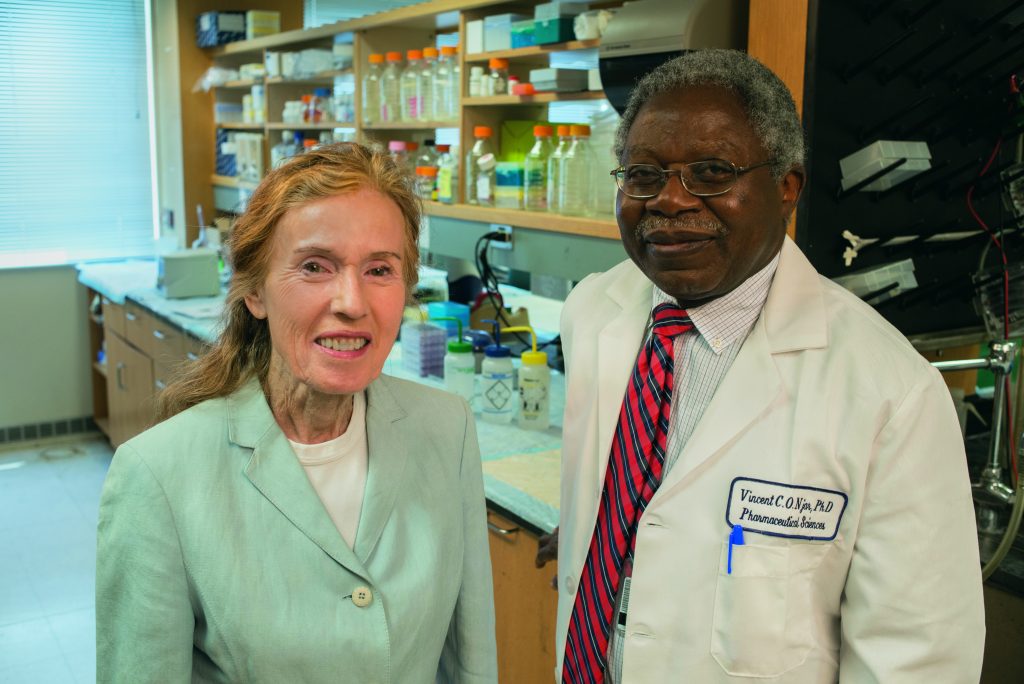
Center at the University of Maryland. It was during that time, in collaboration with Professor Vincent Njar, Professor of Pharmacology at the University of Maryland (right) that they developed a drug called galaterone (VN/124). The action of the drug is unique as the single molecule blocks both the synthesis of androgen and the androgen receptor. The FDA, in 2011, gave the green light for the drug to obtain fast-track approval for clinical trials.
A Personal Story (or Three)
Angela and I (VCJ) met at scientific meetings around the world. In June 1984, I organized a meeting entitled “Estrogen and Anti-estrogen Action: Basic and Clinical Aspects” at the University of Wisconsin Comprehensive Cancer Center (UWCCC). This three-day meeting was a satellite symposium of the 7th International Congress of Endocrinology in Montreal, Canada. Tamoxifen was taking off in America so a translational research conference was timely as a satellite symposium.
Among all the laboratory and clinical research presentations with anti-estrogens, I chose to invite Angela to present her story of the first clinical and laboratory results with formestane. I was aware that she was comparing the effects of tamoxifen, formestane, and the combination in the DMBA-induced rat mammary carcinoma model. Angela noted that formestane was superior to tamoxifen in the DMBA tumor model but the combination was equivalent to tamoxifen alone. Regretably, Angela’s warning of not combining an AI and tamoxifen to treat cancer was ignored. Two decades later, the trial named Arimidex, Tamoxifen, Alone or in Combination (ATAC) demonstrated the same result when evaluated in the adjuvant setting for five years. It is a principle of pharmacology that adding a partial agonist (tamoxifen) to the treatment of an inhibitor of estrogen synthesis (anastrozole) so there is no estrogen available to activate tumor growth, will result in the efficacy of the partial agonist (tamoxifen) alone that bind to the ER. As Angela would state, “There is no anti-estrogen like no estrogen at all.”
Starting as a PhD student at the University of Leeds, I (VCJ) was talent spotted into a parallel world of government service. At the WFEB, I was not only a postdoctoral fellow but also a Technical Intelligence Staff Officer advising the Deputy Chief Scientist (Army) at the Ministry of Defense in London. All my deployments were in Germany. I held a security clearance of NATO Top Secret. I would regularly disappear from WFEB (in my British Army Intelligence Corps uniform), which did not go unnoticed by Angela and Harry!
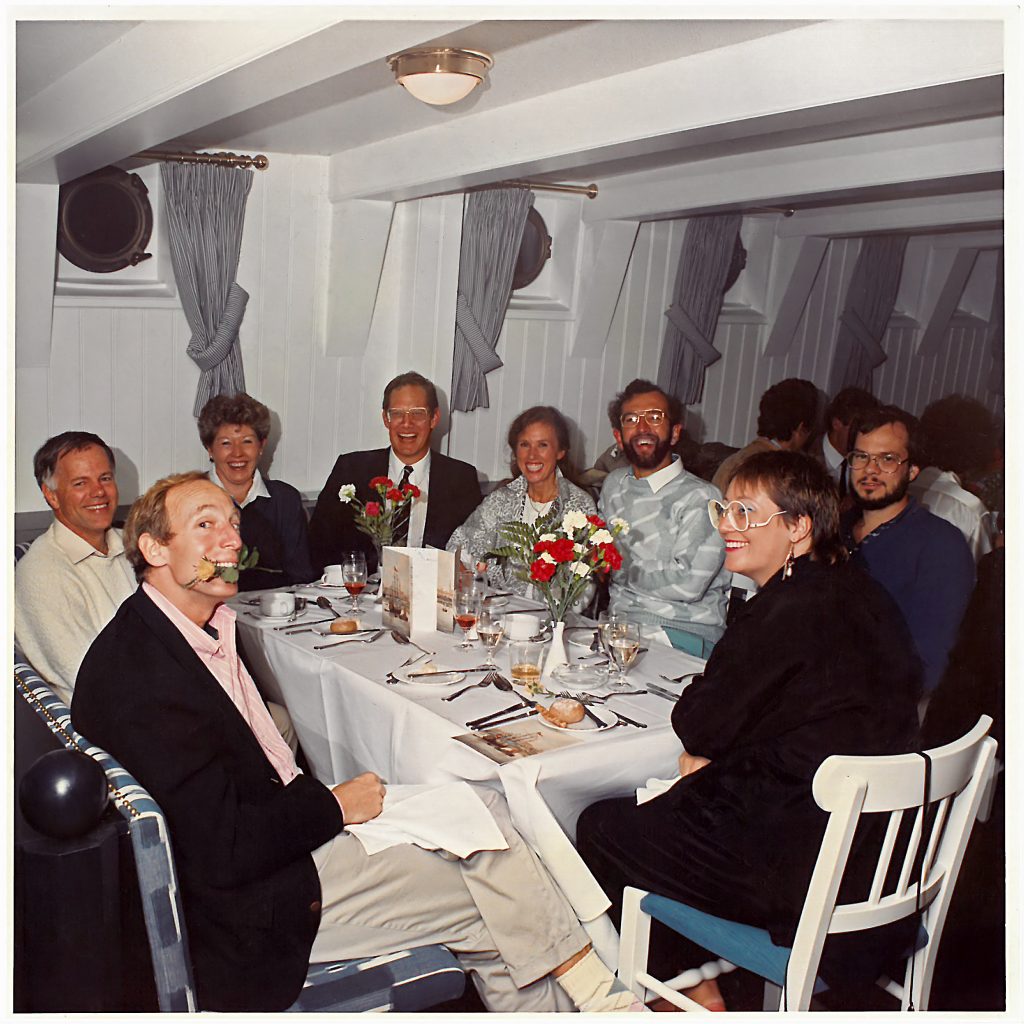
Angela, Harry, and I met up at the International Congress on Steroidal Hormones in Hamberg, West Germany in the late 1970s (above). Aside from the meeting and our presentations, we spent an exciting day visiting the Reeperbahn (women visitors were not permitted to be there but Angela insisted and I talked the police into let her in), an afternoon at the Schimmbad, and then we decided to walk to a restaurant for dinner. Unfortunately, we got lost in the labyrinth of backstreets. I felt I needed to address the situation quickly and I strode up to the only pedestrian in sight, “Entschuldigen Sie, bitte. Ich bin fremd hier. Wo ist der Restaurant Unter den Linden?” Once I had obtained the directions to our destination, I hurried back over the road to Harry as Angela was exclaiming, “Oh my goodness, he is a spy!” We all had a good laugh!
Finally, a tale from an international Congress in New Delhi during the 1970s. We three had met and were enjoying a sumptuous banquet for the Congress participants when Harry was contacted by NIH telling him he must return immediately to Bethesda for issues concerning his study section. The next day he was off to the airport but then Angela received a message from Harry to “spend all the money!“ It turned out that they had converted a large amount of their U.S. dollars to rupees unaware that this was a restricted currency; it was prohibited to take rupees out of the country. Unfortunately, you could not change the Indian money back to U.S. dollars as the currency exchanges were all closed at the airport. Harry had all of his money taken off him and put in to a Red Cross box to be given to a charity! Angela did as instructed spending everything she had on presents with just enough money left to get her to the airport to catch her flight back to the U.S.
Academic Recognition
Angela would tell her students to select a career in an area, “that would benefit mankind.” She did just that. Through a respectful and gentle personality, she

demonstrated tenacity in her determination to pioneer selective AIs because, “women deserved better.” The academic community recognized her contributions to medicine with numerous awards including: the Brinker International Award from the Susan G. Komen Breast Cancer Foundation (2000), The Dorothy P. Landon/AACR Award for Translational Research (2006), the Robert J. and Claire Pasarow Foundation Medical Research Award (2011), and the American Society for Pharmacology and Experimental Therapeutics (ASPET) Award (2012).
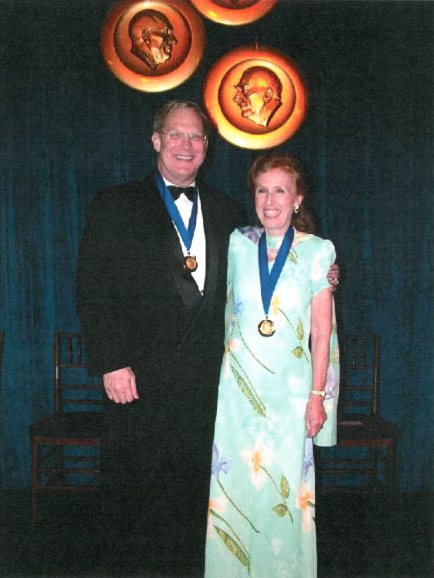
However, three accolades identify Angela Brodie’s contributions to medicine as exceptional: the Kettering Prize from the General Motors Cancer Foundation identify those individuals, who have made the most important advances in the treatment of cancer. Angela received this distinction alone in 2005 for the discovery of the first specific AI and their clinical advancement (right). Not only was she one of only two PhDs (University of Manchester) in the history of the Prize but the only woman. In 2013, Dr. Margret Foti, CEO of the American Association for Cancer Research (AACR), announced the 110 electees of the inaugural class of the Fellows of the AACR Academy. These are the top cancer research scientists worldwide. Angela was selected in this inaugural group based on her pioneering contribution to breast cancer treatment (below). Finally, Angela and I were to share the 24th Gregory Pincus Memorial Medal and Lecture (June 14th 2007) from the Worcester Foundation for Biomedical Research University of
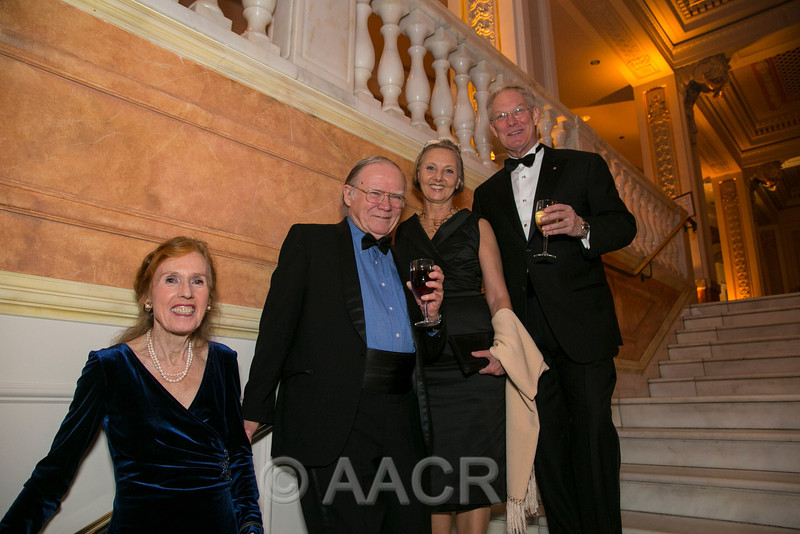
The Last Chapter
Half an hour after Angela died on June 7, 2017, I received a phone call, from Harry just as I was boarding a plane in Houston with a final destination to Riyadh, Saudi Arabia. He requested that I be the master of ceremonies at Angela’s’ memorial service at the Quaker Meeting House near Harry and Angela’s home in Fulton, Md. This I was honored to do, but I had much to reflect upon during that flight with the loss of my friend.
Angela is survived by her husband Harry, a son, Mark Brodie, a drama teacher in San Fernando, Calif., and wife Amy, a brother Emeritus Professor of the University of Western Australia, Laurence Hartley, and his wife Genie, and two grandchildren Jackson and Ryland. She is preceded in death by a son, Dr. John Brodie, a talented theoretical physicist. Angela’s joy and escape from the stress of academic life was riding her horse Blue which she looked after for 30 years.
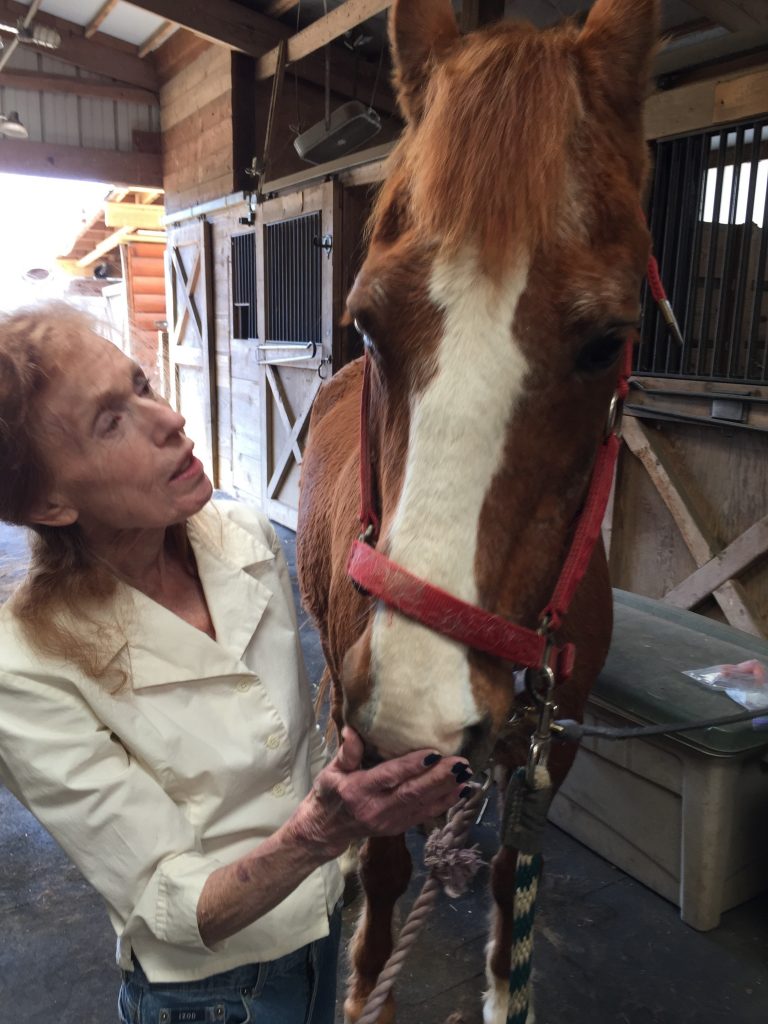
One day she was riding Blue when, she spotted a kitten stuck high in a tree. Angela was not timid, she climbed all the way up, took the kitten to the vet and offered to adopt him. That’s the story of Tiger, Angela and Harry’s cat.
The University of Maryland had announced the creation of The Angela and Harry Brodie Distinguished Professorship in Translational Cancer Research. When Angela was awarded the Kettering Prize in 2005, she was honored with the University of Maryland’s Gold Medal for Research and their Lecturer of the Year award.
Acknowledgments
This work was supported by the National Institutes of Health NIH, MD Anderson Cancer Center Support Grant CA016672 and Susan G. Komen for the Cure Foundation under award number SAC100009, and Cancer Prevention Research Institute of Texas (CPRIT) for the STARs and STARs plus Awards. We thank the benefactors of the Dallas/Ft. Worth Living Legend Chair of Cancer Research, and the George and Barbara Bush Foundation for Innovative Cancer Research. VCJ is the 2018 Laurette of the Gerald Aurbach Award for Translational Research for his discovery of SERMs. We would like to thank Victoria VanGordon for her diligence during the preparation of this manuscript and Katherine Wheeler for her assistance on photo restoration of Figures 2 & 5 at www.katphotomagic.com.
Suggested Further Reading:
Abderrahman BH. A personal tribute to Angela H Brodie, PhD, a scientist who transformed breast cancer treatment. ASCO Post. 2017;8(16):60.
Abderrahman B, Jordan VC. Angela M. Harley Brodie (1934-2017). Nature. 2017;548(7665):32.
Abderrahman B, Jordan VC. Successful targeted therapies for breast cancer: the Worcester Foundation and future opportunities in Women’s health. Endocrinology. 2018;159(8):2980-2990.
Jordan VC, Brodie AMH: Development and evolution of therapies targeted to the estrogen receptor for the treatment and prevention of breast cancer. Steroid. 2007; 72:7-25.
Speroff L. A Good Man, Gregory Goodwin Pincus: The Man, His Story, the Birth Control Pill. Portland, OR: Arnica; 2009.

